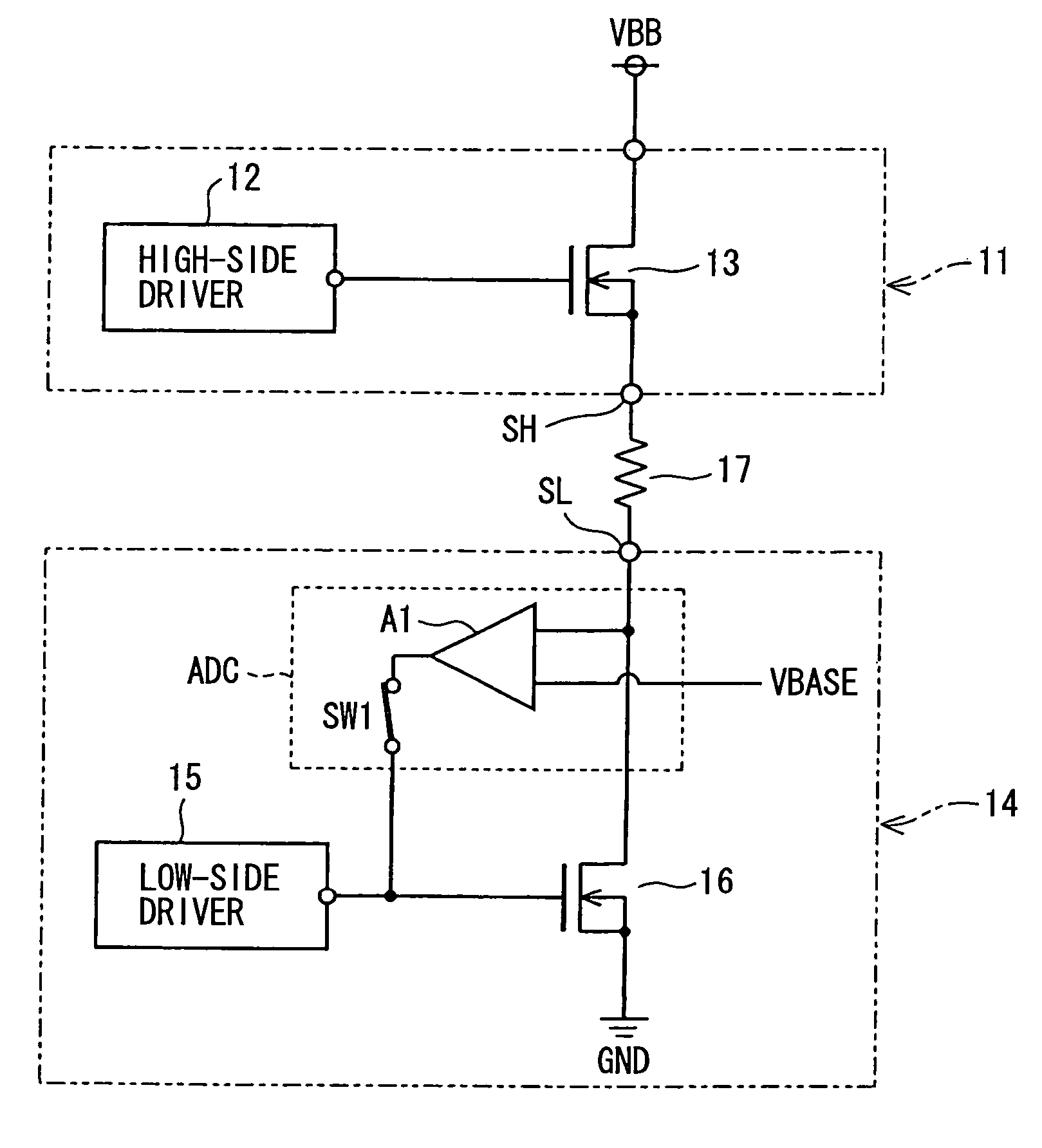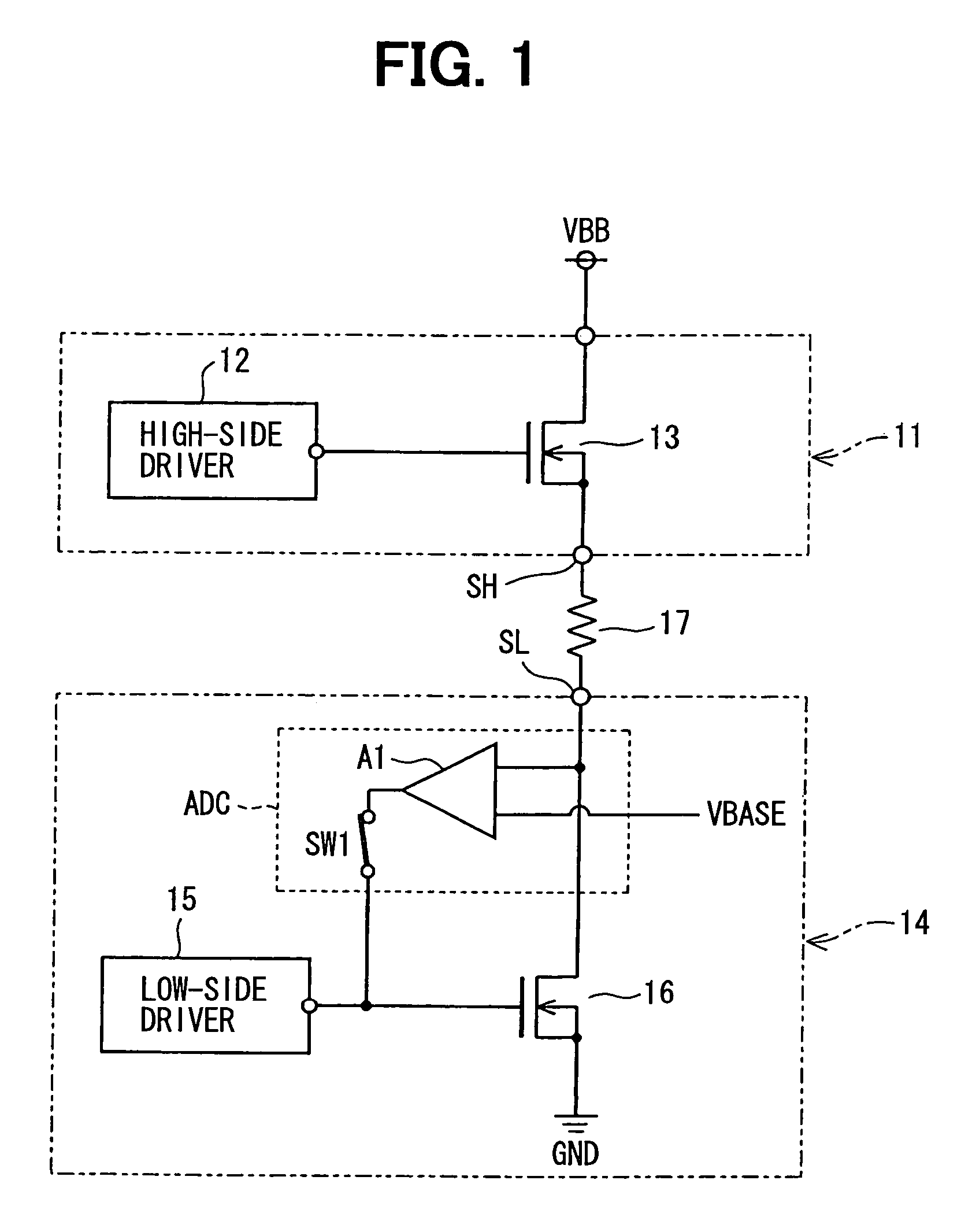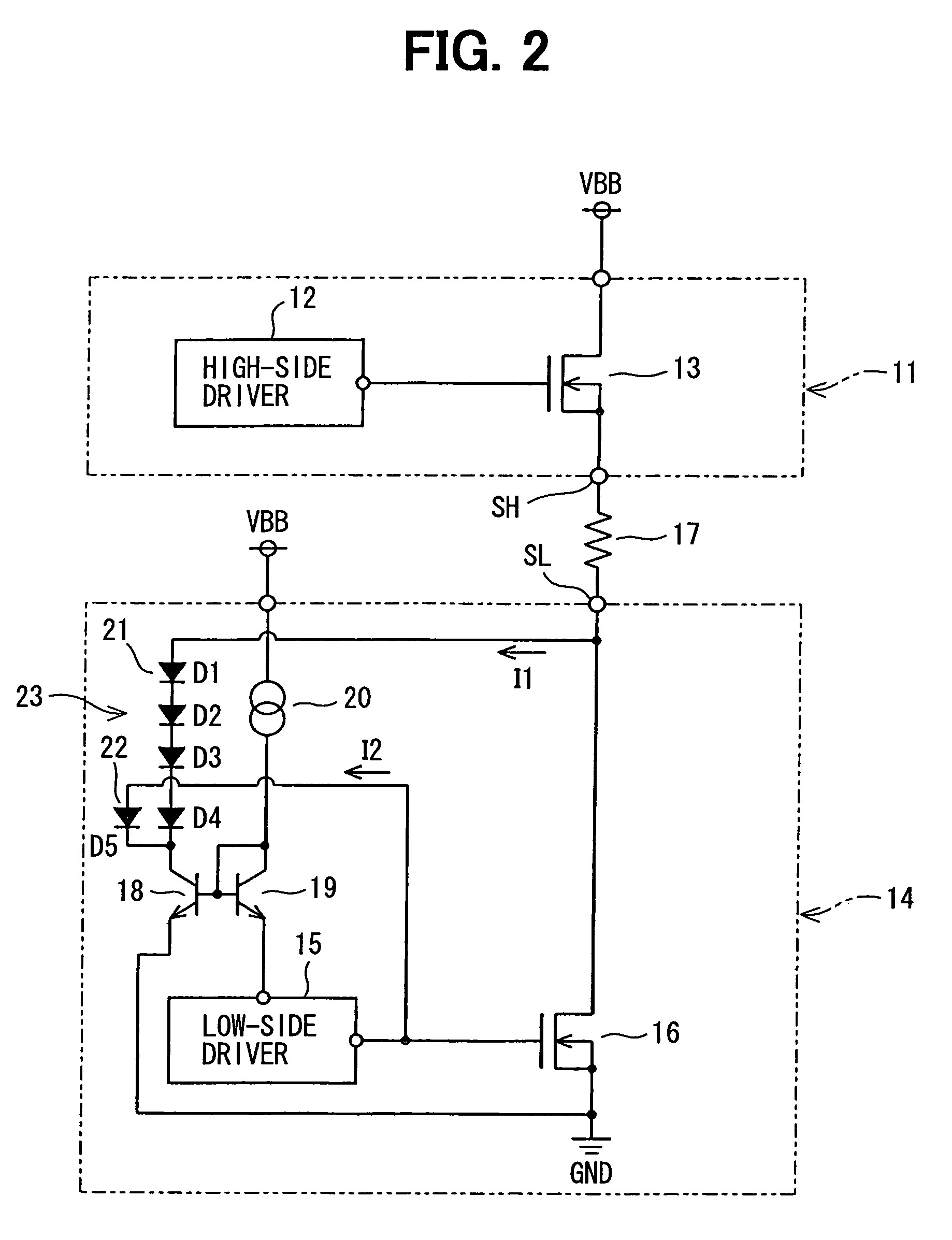Semiconductor device for driving a load
a technology of a semiconductor device and a load, which is applied in the direction of semiconductor devices, oscillator generators, pulse techniques, etc., can solve the problems of increasing the risk of thermal breakdown of mosfet b>3/b>, weakening the competitiveness of the market, etc., to prevent thermal breakdown reduce the heat produced in the first switching element, and increase the size of the first switching element
- Summary
- Abstract
- Description
- Claims
- Application Information
AI Technical Summary
Benefits of technology
Problems solved by technology
Method used
Image
Examples
Embodiment Construction
[0015]Reference is made first to FIG. 1, which shows a semiconductor device used as a driver circuit in an airbag ECU. The driver circuit has a high-side circuit 11 and a low-side circuit 14.
[0016]The high side circuit 11 includes a high-side driver 12 fed from a charge-pump type voltage step-up circuit (not shown) and an n-channel LDMOS (Laterally Diffused MOSFET) 13 provided as the first semiconductor switching element. A voltage of a gate terminal (a control terminal) of the LDMOS 13 is controlled by the high-side driver 12. A drain terminal and a source terminal of the LDMOS 13 are connected to a power supply terminal VBB and an output terminal SH, respectively. The low-side circuit 14 includes a low-side driver 15 and an n-channel LDMOS 16 provided as the second semiconductor switching element. The low-side driver 15 controls a voltage of a gate terminal of the LDMOS 16 and switches on and off the LDMOS 16. A drain terminal and a source terminal of the LDMOS 16 are connected to...
PUM
 Login to View More
Login to View More Abstract
Description
Claims
Application Information
 Login to View More
Login to View More - R&D
- Intellectual Property
- Life Sciences
- Materials
- Tech Scout
- Unparalleled Data Quality
- Higher Quality Content
- 60% Fewer Hallucinations
Browse by: Latest US Patents, China's latest patents, Technical Efficacy Thesaurus, Application Domain, Technology Topic, Popular Technical Reports.
© 2025 PatSnap. All rights reserved.Legal|Privacy policy|Modern Slavery Act Transparency Statement|Sitemap|About US| Contact US: help@patsnap.com



